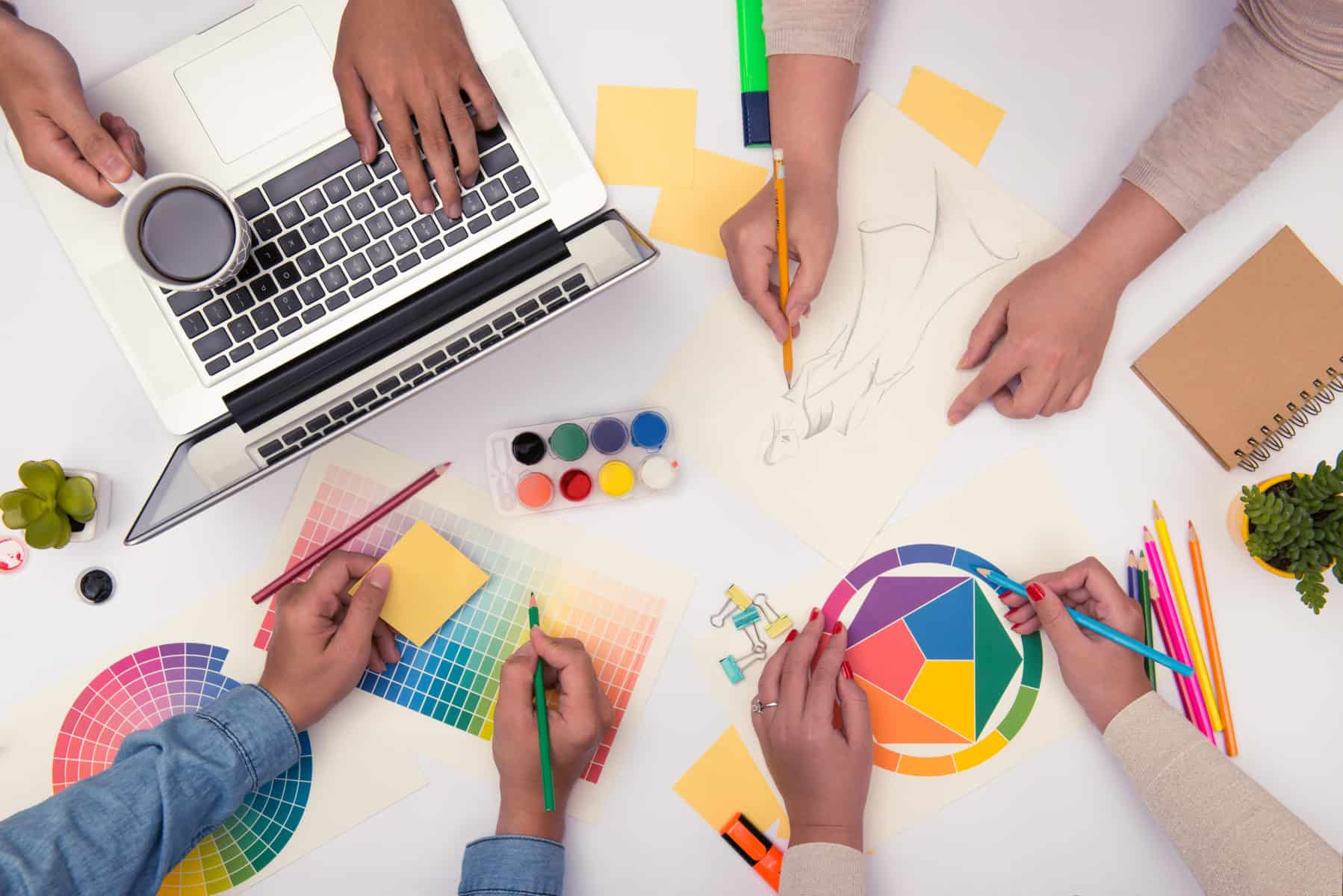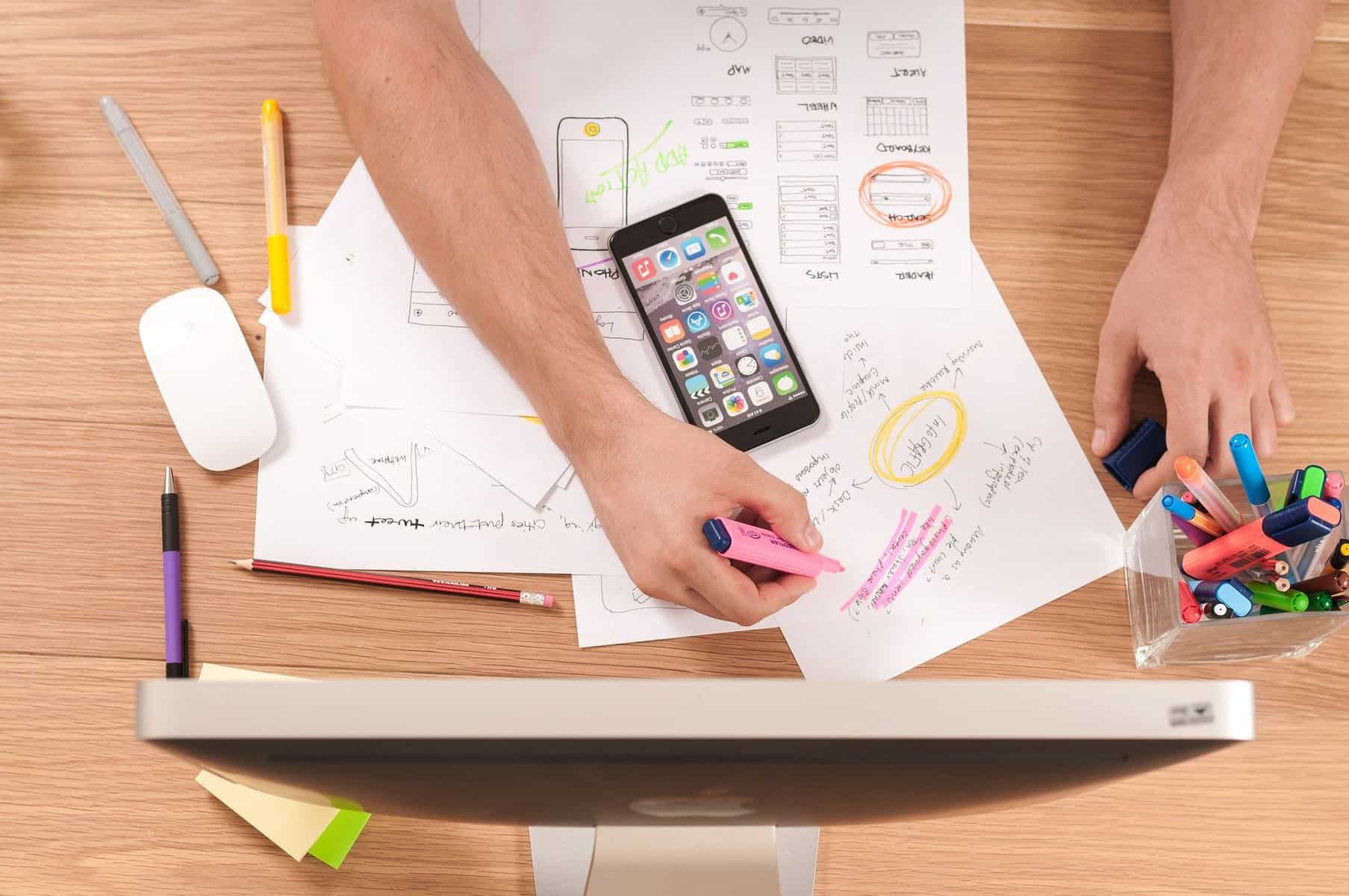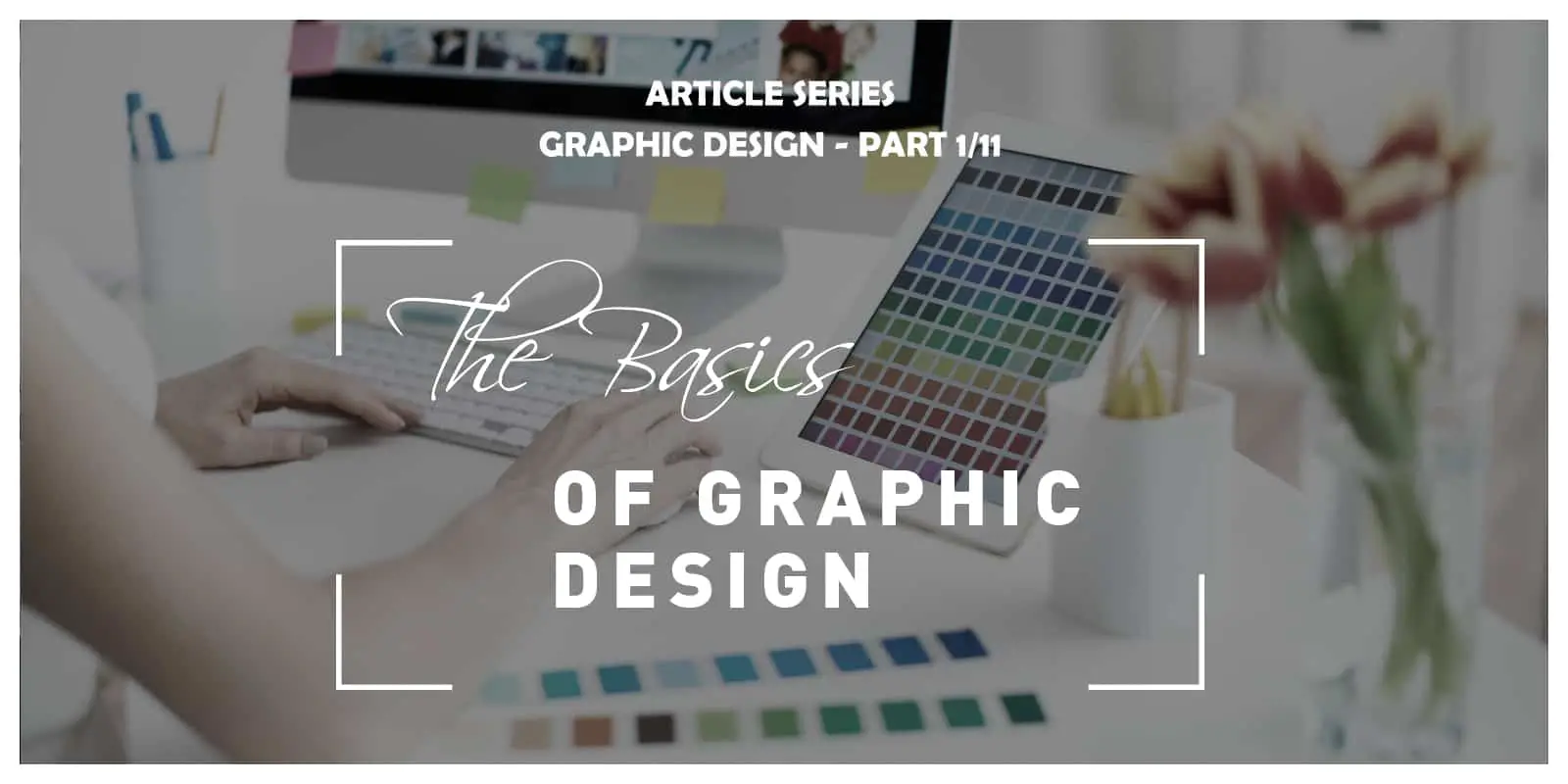The Basics of Graphic Design is the first article in the Ultimate Graphic and Web Design Basics Guide. It was meant for those looking to get their career started as designers, but also for those that are interested in the design process. Within the following series of the nine articles, and two “bonus tips” articles, we will cover everything you need to know to get started. Stay tuned for the following articles:
- The Basics of Graphic Design: What It Is, and What’s It For?
- Color Theory & Psychology
- Typography: How to choose the proper font
- Layout & Composition
- Photography in Graphic Design
- Branding & Logo Design
- How Graphic Design Translates into Web Design?
- User Experience – How to get it right?
- Modern Trends in Design
- Bonus tip: How to find your first gig
- Bonus tip: How to work with clients
Stay tuned for the full series!
Like its name, graphic design is made up of two things, graphics, and design. To be able to understand what graphic design is, we should first know what the things making up the graphic design are. Graphics is a visual art, and something made using imagination and expression. Visual elements make up graphics, and they serve as the building blocks of design. If you’re not much a designer yourself, you can choose beautiful designs using the best website builders. Design is planning the look and function of something before it is actually made. Making the concoction flawless is tricky but achievable so be ready to spend quite a few extra hours in your weekly schedule to get the desired result. If you’d be keener on letting the pros tackle it, G Squared web design are the experts to reach out to.
The pillars of design are its rule, also known as design principles.
Now, what is graphic design?
It is a fusion of two opposites, artistic expression, and practical application. All good designs require a harmonious combination of these two things. Another term used for graphic design is communication design because the main objective of every graphic designer is to communicate a specific message using physical and visual art.
What a lot of people get wrong about graphic design is that they think of it just as drawing, painting, or creating logos. Well, while they aren’t completely wrong, graphic design is a lot more than that. It is the skill of presenting information for some function through a creative process. Its purpose is to inform, influence, and instruct on a commercial level. Graphic design is used in almost every industry for a range of purposes like advertising, branding, web and interface design, magazines, packaging, and paper engineering, TV and other media, art, and more.

If there is one area graphics design is most known for, it would be advertising and marketing. A product’s graphic design can be what makes a customer buy that specific product or completely ignore it, all depending on how the design was executed. It is also what can help a brand build a memorable brand identity. Besides commercial usage, graphic design can be used for artistic expression as well.
Everything mentioned until now was quite general, but the graphic design can be divided into types/usage categories. A graphic designer can focus on a specific set of them and change from one to another throughout his/her career. Here are the most common ones:
Marketing/advertising graphic design
Probably the most recognizable usage of graphic design. It is used to aid marketing strategies with a range of graphic materials like flyers, news ads, car wraps, social media ads, websites, and much more.
Visual identity graphic design
Designers working in this category create art that serves as a face for some brand. To be able to do that, they have to work closely with the company in order to truly get to know it and its identity. These designers have to be familiar with a range of styles because every brand they will work for is unique.

Packaging graphic design
Almost every product comes in a package, and not only for practical reasons but also for the purpose of advertising and appealing to the customer. To create packaging graphic design, you should possess some knowledge of the processes in printing and the principles of industrial design.
Publication graphic design
The publication isn’t only newspapers but all digital publications, books, magazines, and similar. They all need to have layouts with appropriate typography, illustrations, and graphics, that is where graphic design steps in.
User interface graphic design
Every piece of hardware runs on software, and every piece of software has to have well designed graphic elements. Graphic design for software interfaces is creating web pages, mobile pages, themes, game interfaces, and more, with the perfect balance of aesthetics and functionality. If you want to become a user interface graphic designer, basic knowledge in HTML, CSS, JavaScript and other programming languages are a great asset. If that seems as too challenging of a task to handle, there’s always a possibility to hire a UX company to handle those tasks for you.

Motion graphics design
This category has risen in popularity quite a lot in the recent years and is used in all online media, animation, television, film, etc.. Using motion graphics, you will be creating promo videos, gifs, trailers, animated logos, video games and more.
Environmental graphic design
The purpose of environmental graphic design is to make people connect better with their environment. That is achieved by making it more interesting, informative, and memorable through murals, special event spaces, interiors, exhibitions, and other similar things. The environmental graphic design incorporates interior, architectural, and industrial design.
Art and illustrations for graphic design
This category is a bit different since the designs created in it are not intended for problem-solving but more to be unique pieces of art. It can include all sorts of things like textiles, motion graphics, stock images, publications like novels and books, covers for albums and literature, and more. A person working in this category is often referred to as a graphic artist, not a designer, but they can be both and switch between those disciplines if they wish to.
What does a graphic designer do?
As a graphic designer, you will be responsible for visually presenting the information provided by the company you are working on at that moment by using a variety of design elements. If you prefer to do a specific type of design constantly, then you can pick a specialization, or if you like to work on projects with a similar theme, you can choose an industry to work in.
Whether you are a full-time employee or a freelancer, companies can have you do a lot of things that include design, all depending on the company’s needs.
As a graphic designer, you’ll make use out of a lot of elements in order to create a design, those elements being text and images to video, audio, and more.
Your job is not only to decide which visuals to use but how to make them all work together in the best way possible to convey the brand’s message.
The timeline of your usual project might be something like this. First, you will hear the client’s idea, make sure you understand it, and that the client is understanding their audience and wants to create something suited for them. After that, you will start planning the design and doing the actual designing, most likely using some kind of design software.
What you will have to do is decide on what the best colors, fonts, layouts, illustrations, and more are suited best for that specific design project. After coming up as something you feel is close to a finished design, you present it to the client to make sure that was what they were looking for and that they are happy with it. Finally, if they are not completely satisfied with it or they want to add something, you are there to make the appropriate changes.
To do the job of a graphic designer, you will need to possess a few skills.
Being artistic and creative is, of course, one of the main skills of a designer, that is what separates them from the rest of us and allows them to create amazing pieces of design art.
A designer also has to be communicative with good analytical skills so they can understand the needs of the client and their audience correctly.

Collaborative, since a lot of the time, a designer has to work with marketers, programmers, writers, and other designers on a project.
Time management skills are very important for a designer because projects need to be delivered at a certain deadline; this is especially important for freelance designers since they manage their own time.
This might sound weird, but a designer has to be selfless with their designs and create what the client wants and not what they want or personally think is best.
Types of designers
Like the discipline of graphic design, people working in it can also be divided into types. A rough division without getting into too much detail would consist of these four types of graphic designers: in-house, freelance, agency, and studio designers.
In-house designers do basically everything, work for a company in any industry. A business company will hire them usually to do designs specifically for them.
Freelance designers are almost the same as in-house designers unless they decide to specialize in one category of design. They will usually work from home, for a number of companies, and following their personal work schedule.
Agency designers, also generalists but they are employed by agencies who do projects for a big number of clients.
Studio designers will most likely be specialists in one area of design. A studio that employs this type of designers will have small teams of different specialists who are tasked with doing larger projects
Should you become one?
If you are wondering whether the graphic design is the right profession for you, here are some reasons why you should consider it.
To be a graphic designer, you don’t have to have a degree, but your technical skills should be quite refined. Your job will be more than doing art; you will be solving problems with your creativity. If you don’t like the office vibe and are a free spirit, you can always choose to be a freelancer and work on your own terms. You don’t have to be constrained style-wise either, because you are free to explore design styles and different industries as you wish. You aren’t limited to a specific technique either and can use illustration, photography, printing, whatever you please in your work.
You’ll be making a living out of bringing your imagination to life and learning a lot along the way by doing research for your work. All your designs will be a presentation of your hard work and will be viewed by a lot of people.
Most other jobs require you to be either analytical or creative, but in graphic design, you can and need to be both.
If you are doing a good job, it is very rewarding and moving up in the industry is a possibility. If you do choose to go into another industry after doing graphic design, the knowledge you gained will be very valued in a lot of other industries.
The graphic design industry is very laid back but also has a tight-knit community too. It is a very fast-growing industry with a growing client base, and the jobs in it are paid quite well.
Besides the financial benefits, reports say that working in graphic design is very satisfying, fulfilling, and doesn’t require a huge financial investment to start off.
I don’t think you need more convincing to take your chances in the graphic design industry.

